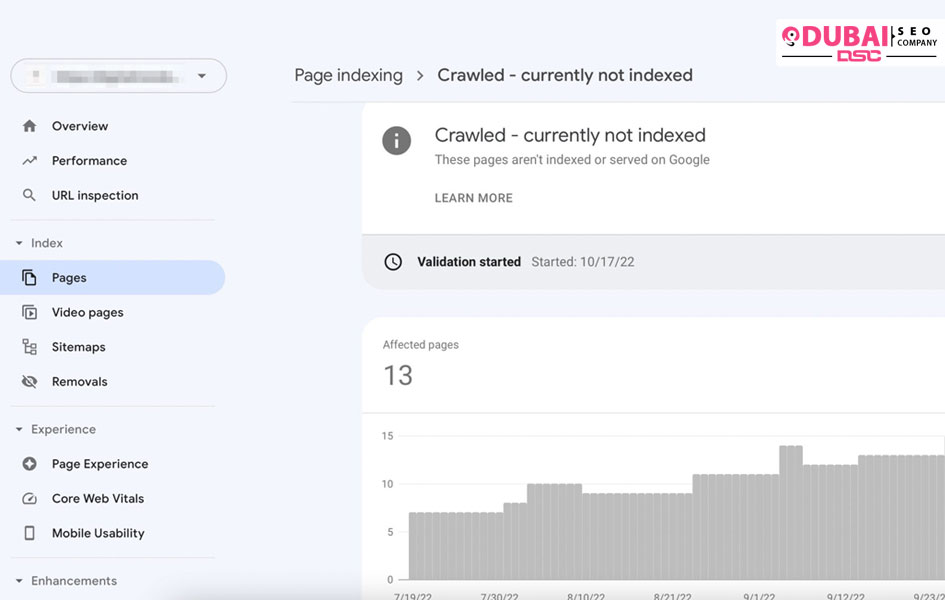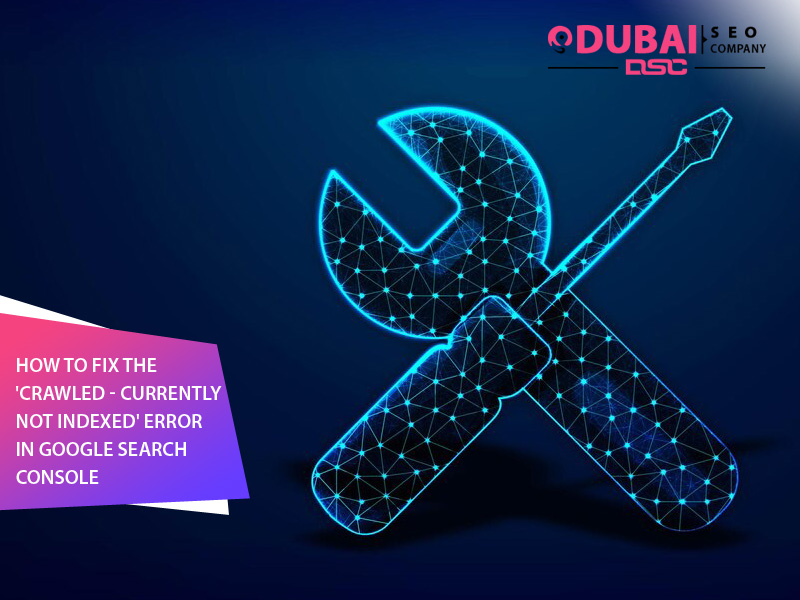When Google has crawled or covered a page but has decided against adding it to its search index, ‘crawled – currently not indexed’ is the status it displays. What it essentially means is that the URL will not come through in search results.
Google, on its part, does not offer any clarification on why this status is accorded to a page. However, when you see a page with this status, you know that Google believes it does not have the quality that warrants it to be indexed. Once a page receives a ‘crawled – currently not indexed’ status, it stops appearing on Google’s result pages.
When your page gets a ‘crawled – currently not indexed’ status, you could get a little worried and start looking for a way to fix this. Everybody would want their website or web pages to be indexed on Google. Most companies take the help of digital marketing agencies to invest in SEO practices so that their website and web pages get a higher ranking on Google and other search engines.
When the ranking of a company’s website or web page goes down or it does not get indexed on Google, the business owner gets worried as the company starts losing its presence on digital media.
A ‘crawled – currently not indexed’ status is never good news for a business owner.

How To Fix It
Before you go about fixing a ‘crawled – currently not indexed’ status, you should know about some of the reasons why it appears. If you collaborate with a digital marketing agency or an SEO company, they will enlighten you on some of the pertinent reasons behind this occurrence. After getting an idea about some of the reasons, you can look for solutions that would lead to Google getting them indexed.
A lot of times, people confuse the ‘crawled – currently not indexed’ error with the ‘excluded by no index tag’ error. Both these errors tend to appear on the indexing report of the Google Search Console page. While both errors indicate a page getting crawled but not indexed, the ‘crawled – currently not indexed’ error can be interpreted in different ways.
Internal Linking
Sometimes, Google decides a particular web page should not be indexed owing to its bad internal link structure. Google could also arrive at this decision if the page does not feature internal links. When the page is not supported by a link, it is often referred to as an orphan page.
If you want to make improvements to the internal linking structure of a page, you need to first visit an already existing page on your company’s website. After that, you have to trace a section of the given article based on the topic page that you expect to get indexed by Google. Here, you have to add a link as well.
You can increase the possibilities or opportunities around internal linking by opting for a dedicated site-based search. This search has to be carried out in Google and will revolve around the keyword that is being targeted by the orphan page. While putting across this query on Google, you have to follow a particular format. Your site name or domain name should be followed by the target keyword for the orphan page.
The search results will be driven by pages from your company’s website that have already been using the target keyword and could offer internal linking opportunities. Every business that wishes to have a good ranking for its website and wants to register its presence online cannot afford to ignore internal linking opportunities. Internal linking is very important to keep your web pages relevant in the digital space.
Search Intent
A company specializing in on-page SEO will tell you that search intent is one of the pertinent reasons behind pages getting the ‘crawled – currently not indexed’ error. Search intent refers to a gap or mismatch in the content on your website and the kind of content that appears in the search results. Search intent has a direct effect on the rankings of a web page or website.
To ensure you score well on the search intent aspect, you should go through pages on Google that have a high ranking. You can check and analyze the content on these pages and accordingly, create content for your website and web pages. If you have already published a lot of content on your website, you have the option of changing or rewriting it.
Structured Data
Structured data enables search engines to get an idea about the content put up on a page. Using the Google Search Console Enhancements tab, you can have a look at your structured data status. Keeping a tab on your structured data is important for multiple reasons. If the structured data contains errors, Google might decide not to index the page even after the process of crawling is over.
When data structures are filled with errors, Google could end up misinterpreting the page. This would, invariably, lead to your page not making an appearance on Google’s index. Sometimes, the page shows up in rich snippets but not in Google’s index.
Private Content
Private content could be the reason behind you seeing the ‘crawled – currently not indexed’ status on your page. Sometimes, Googlebot could end up accessing or viewing content that it is not supposed to. This is when you could see the ‘crawled – currently not indexed’ error appearing on private URLs.
Private pages could be of different types. When an online environment is undergoing a development process, it could be declared as a private page. Paywalled content could also be considered private content.
When Google does not crawl your website in a focused manner, there is a possibility of Googlebot moving around aimlessly to look for content that would be of some value to internet users. Based on the issue you are facing, you have the option of taking a few steps like getting the internal links removed or making some alterations to the sitemap.
Expired Products
While running an e-commerce website, you should avoid making the mistake of listing products that are out of stock or not available at the moment. While it is fine to list a few products that could be back in stock in the future, it would be a good idea to avoid listing too many of them. When a website has a lot of these listings, it ends up getting a ‘crawled – currently not indexed’ status.
When you get a ‘crawled – currently not indexed’ error message, you need to check whether you have too many out-of-stock products listed on your website. If that is the case, you need to take some immediate measures to sort this out. You should check your stock feed and make sure most of the products listed on your web pages are in stock.
Conclusion
For a business, the first step towards building a strong digital presence is ensuring its website and web pages get good visibility on Google. Whenever an issue leads to your pages not getting indexed or getting delisted on Google, you should look into it immediately. The occurrence of a ‘crawled – currently not indexed’ is something that deserves your immediate attention. If you struggle with it despite taking some remedial measures, you can reach out to a digital marketing agency to help you out.

